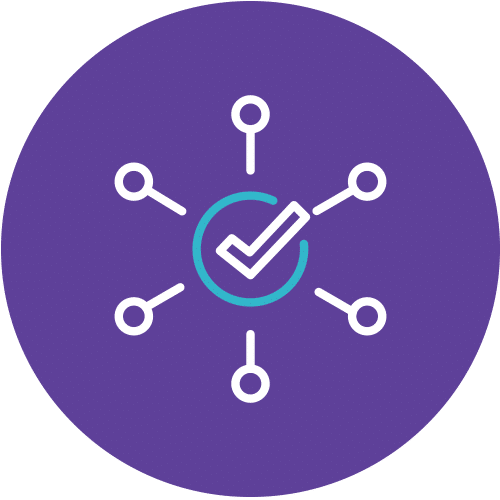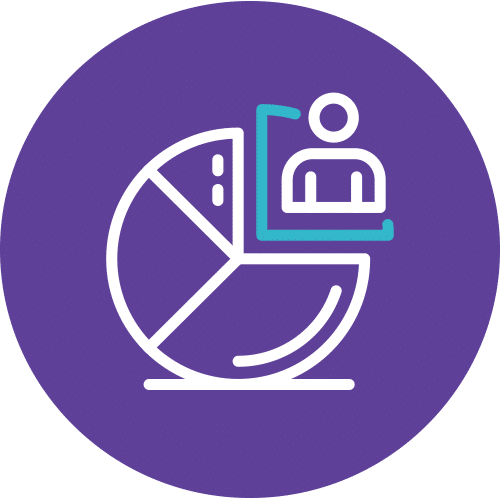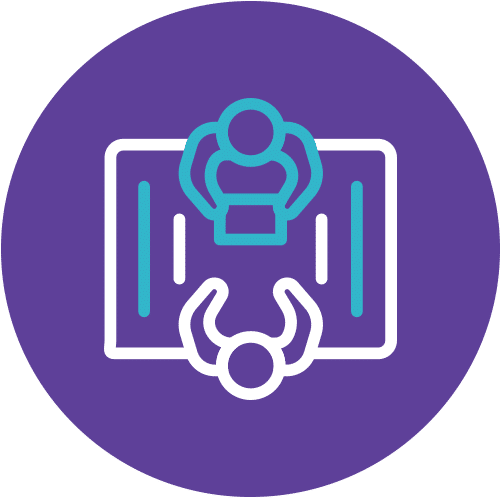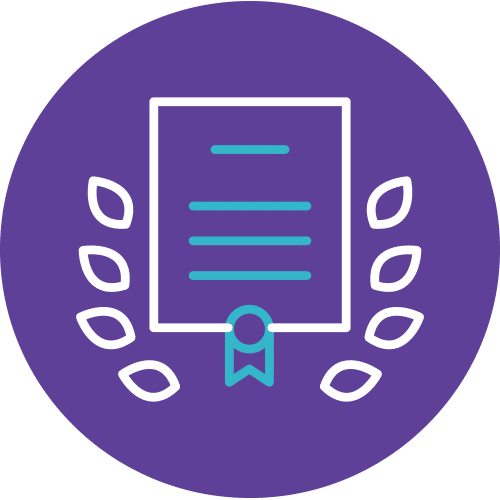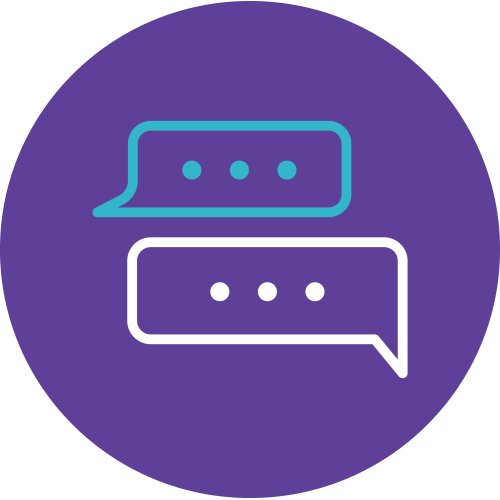Certified Business Analysis Professional (CBAP): Unleash Your Potential
Are you ready to elevate your career and become a Certified Business Analysis Professional (CBAP)? This comprehensive course equips you with the knowledge and skills needed to excel in the dynamic world of business analysis.
Unlock Your Career
As a CBAP, you’ll be equipped to take on a pivotal role in organizations, driving informed decision-making, and facilitating change. This certification isn’t just a credential; it’s a pathway to success. No matter where you are in your career, whether you’re an experienced professional or just starting out, the CBAP course ensures that you’re prepared to tackle the challenges of the business world.
What You'll Learn
Our course covers a wide range of topics, from business analysis planning to solution evaluation, and everything in between. You’ll delve into key concepts, master techniques, and develop underlying competencies that will set you apart. The course’s interactive approach, including discussions, practical exercises, and real-world case studies, makes learning engaging and effective. Plus, you’ll gain insights into the latest industry trends, including Agile methodologies and the application of business analysis in various domains.
Becoming a Certified Business Analysis Professional is more than a title; it’s a gateway to an exciting and fulfilling career. Join us on this transformative journey, and let’s unleash your potential together. Your future as a CBAP starts here!
Course Details
Course Code: CBAP; Duration: 5 Days; Instructor-led
Audience
Prerequisites
No pre-requisite for this course
Methodology
This program will be conducted with interactive lectures, PowerPoint presentation, discussions, and practical exercises.
Course Objectives
- Student will be able to: remember Exam Pattern, fees, Application process and strategy.
- Understand business analysis, responsibilities, competencies, artifacts of BA.
- Remember the structure of BABOK.
- The instructor will explain BA Core Concept Models, requirement classification and Stakeholders.
- Creates Rules for selecting the business analysis approach.
- Guides Practice for determining the appropriate level of formality that is required for the business analysis approach.
- Creates Rules for identifying the required business analysis activities.
- Advanced Knowledge of considering the timing of business analysis work within the context of the overall change.
- Advanced Knowledge of assessing the complexity and size of the change and the overall risk factors for the change.
- Guides Practice for ensuring key stakeholders understand and agree to the business analysis approach.
- Guides Practice for performing stakeholder analysis.
- Advanced Knowledge of defining the level of stakeholder collaboration that will be required to support the change.
- Advanced Knowledge in identifying appropriate stakeholder communication needs.
- Advanced Knowledge in identifying an effective decision-making process.
- Guides Practice for developing an effective change control process for requirements and designs.
- Guides Practice for planning effective prioritization process for requirements and designs.
- Advanced Knowledge of planning an effective approval process for the deliverables that will be produced.
- Guides Practice in determining how business analysis information will be organized.
- Guides Practice in determining the appropriate level of abstraction for business analysis information.
- Creates Rules on planning the traceability approach.
- Creates Rules on planning for requirements reuse.
- Guides Practice in determining how business analysis information will be stored and accessed.
- Creates Rules for identifying what attributes will be used for ongoing management of requirements and designs.
- Advanced Knowledge of report on business analysis performance.
- Advanced Knowledge of identifying analysis performance measures that can be used.
- Guides Practice in assessing business analysis performance measures.
- Guides Practice in recommending improvements to business analysis performance.
- Creates Rules for the scope of the elicitation effort.
- Creates Rules for selecting appropriate elicitation techniques.
- Creates Rules for setting up logistics for elicitation activities.
- Creates Rules for preparing supporting elicitation materials.
- Creates Rules for preparing stakeholders to ensure elicitation activities will run smoothly.
- Creates Rules guiding the elicitation activity.
- Creates Rules to capture the outcomes of the elicitation activity.
- Students should be able to prepare for an elicitation session by preparing a list of questions to be asked to client.
- Students should be able to understand challenges in Elicitation and appropriate measures taken for the same.
- Students should be able to understand best practices in the industry.
- Advanced Knowledge in comparing elicitation results against source information.
- Advanced Knowledge in comparing elicitation results against other elicitation results.
- Advanced Knowledge in determining objectives and format of communication.
- Guides Practice for communicating the appropriate level of detail so stakeholders can understand the information.
- Advanced Knowledge of gaining agreement for required stakeholder commitments.
- Advanced Knowledge of monitoring stakeholder engagement.
- Advanced Knowledge of demonstrating collaborative relationships with key stakeholders.
- Creates Rules for modelling requirements and designs.
- Creates Rules for Analyzing requirements and designs.
- Creates Rules for identifying key information for requirements and designs, and their attributes.
- Creates Rules for developing the appropriate level of abstraction to meet various needs.”
- Creates Rules for applying the characteristics of requirements and designs quality.
- Creates Rules for performing verification activities throughout the work.
- Creates Rules for using appropriate checklists for quality control.”
- Advanced Knowledge of identifying assumptions and utilize them to manage risks.
- Creates Rules for defining measurable evaluation criteria to assess the success of the change.
- Guides Practice in evaluating alignment with solution scope to support value delivery.”
- Advanced Knowledge of making effective use of requirement viewpoints and views.
- Creates Rules for leveraging templates to develop the solution architecture.
- Guides Practice in ensuring the set of requirements is complete.
- Guides Practice in ensuring requirements relate to each other by identifying requirements relationships.
- Creates Rules for defining the business analysis information architecture.”
- Guides Practice in identifying appropriate solution approaches.
- Guides Practice in identifying improvement opportunities.
- Guides Practice in allocating requirements to solution components and releases to best achieve change objectives.
- Guides Practice in developing design options aligned with the desired future state.
- Guides Practice in identifying the benefits that a potential solution is expected to deliver.
- Guides Practice in identifying the costs associated with a potential solution.
- Guides Practice in determining the value of a solution to key stakeholders.
- Guides Practice in assessing design options and recommends the appropriate solution.
- The instructor will explain SCRUM and role of BA in SCRUM, he will also teach how to write user stories. This will equip a BA with necessary skills required to work in an Agile environment.
- Creates Rules for considering value and relationships while tracing requirements.
- Creates Rules for identifying the relationships to track to effectively manage traceability.
- Creates Rules for determining an appropriate traceability repository to be used.
- Guides Practice in determining how best to maintain requirement and design information.
- Guides Practice in determining how best to manage attributes.
- Guides Practice in managing requirements that can be reused, longer term.
- Guides Practice in determining the appropriate basis on which requirements will be prioritized.
- Guides Practice in guiding stakeholders through the challenges of prioritization.
- Advanced Knowledge of prioritizing as new information becomes available.
- Advanced Knowledge of assessing the formality of the assessment process.
- Advanced Knowledge of completing impact analysis activities, as needed.
- Advanced Knowledge of guiding impact resolution activities.
- Advanced Knowledge of stakeholder roles and authority levels.
- Guides Practice in managing conflicts and resolving issues.
- Advanced Knowledge of using appropriate methods to gain consensus about key business analysis information.
- Guides Practice in tracking and communicating approval decisions.”
- Guides Practice in defining business needs.
- Guides Practice in understanding the organizational structure and culture.
- Guides Practice in understanding the organizational capabilities and processes.
- Guides Practice in understanding the technology and infrastructure utilized by the organization.
- Guides Practice in understanding organizational policies and business rules.
- Guides Practice in understanding the organization’s business architecture.
- Guides Practice in understanding the organization’s internal assets.
- Guides Practice in understanding external influencers.
- Guides Practice in articulating business goals and objectives.
- Guides Practice in determining the solution scope.
- Guides Practice in identifying constraints.
- Advanced Knowledge in identifying potential changes to organizational structure and culture required to support the desired change.
- Advanced Knowledge in identifying new capabilities and business processes that will be required to support the change.
- Advanced Knowledge in identifying new technology and infrastructure that will be required to support the change.
- Guides Practice in identifying new organizational policies and business rules.
- Guides Practice in ensuring business architecture is respected.
- Advanced Knowledge of assessing resource alignment for future state and transition to future state.
- Guides Practice in identifying assumptions related to the future state.
- Guides Practice in evaluating the potential value for the future state.
- Advanced Knowledge in identifying unknowns.
- Advanced Knowledge in identifying and manage constraints, assumptions, and dependencies.
- Advanced Knowledge of quantifying the impact of risk factors.
- Advanced Knowledge of assessing stakeholder and organizational risk tolerances.
- Advanced Knowledge of recommending an effective course of action based on risk assessment.
- Advanced Knowledge in identifying the appropriate solution scope after evaluating multiple solution scope options.
- Guides Practice in performing gap analysis to understand missing capabilities.
- Guides Practice in completing the enterprise readiness assessment.
- Guides Practice in developing an effective change strategy.
- Guides Practice in developing appropriate transition states and completes release plans.
- Creates Rules for identifying the appropriate measures to use to assess solution performance.
- Guides Practice in validating the performance measures selected with key stakeholders.
- Guides Practice in collecting appropriate performance measures that can be used to assess solution
- Guides Practice in examining the performance measures collected to assess solution performance against the desired value.
- Guides Practice in highlighting risks identified through assessing the performance measures.
- Guides Practice in assessing performance measures to identify relevant trends.
- Guides Practice in testing and analysing performance measures to ensure their accuracy.
- Guides Practice in identifying performance variances, their root cause, and recommending appropriate actions to reduce variance.
- Guides Practice in identifying internal solution component dependencies.
- Guides Practice in performing problem analysis to identify the source of solution limitations.
- Guides Practice in performing impact assessment activities to quantify factors that affect solution performance.
- Guides Practice in assessing enterprise culture.
- Guides Practice in completing stakeholder impact analysis.
- Guides Practice in assessing how a solution impacts the organizational structure.
- Guides Practice in performing operational assessment.
- Guides Practice in ensuring appropriate solution performance measures are being used.
- Guides Practice in providing substantiated recommendations.
- Advanced knowledge of how business analysis can be applied in Agile, Business Intelligence, BA, BPM and how BA works in these areas.
- Knowledge on how, when and where to use the techniques prescribed in BABOK.
- Apply and use some of the advanced techniques like Balanced Score Card, Business Model Canvas in order to ensure retention of knowledge.
- Applied knowledge of all the skills.
Outlines
Module 1: CBAP Exam Information
- About IIBA
- Benefits of CBAP certification
- Eligibility
- Exam Blueprint & Exam pattern
- Exam fees
- Application process
- How to prepare for exam?
- Course Details
Module 2: Introduction to Business Analysis
- Who is a Business Analyst?
- Responsibilities of a BA
- Competencies of a BA
- Artifacts prepared by a BA.
- BA Career Paths
Module 3: Introduction to BABOK V3
- BABOK Structure
- Knowledge areas
- Tasks
- Elements/Guidelines
- Techniques
- How to read BABOK?
Module 4: Business Analysis Key Concepts
- Business Analysis Core Concept Model
- Key Terms
- What are requirements?
- Requirement Classification
- Stakeholders revision
- Requirements and Design
- Case Study of a Retail Customer
Module 5: KA1 - Business Analysis Planning & Monitoring
- Overview
- Core Concept Model in BAPM
- Plan Business Analysis Approach
- Plan Stakeholder Engagement
- Plan Business Analysis Governance
- Plan Business Analysis Information Management
- Identify Business Analysis Performance Improvements
- Case Study of a Retail Customer
- Chapter Quiz
Module 6: KA2 - Elicitation and Collaboration
- Overview of Elicitation and Collaboration
- Core Concept Model in Elicitation and Collaboration
- Prepare of Elicitation.
- Case Study
- Conduct Elicitation
- Elicitation Techniques
- Challenges in Elicitation
- Best Practices
- Confirm Elicitation Results
- Communicate Business Analysis Information
- Manage Stakeholder Collaboration
- Chapter Quiz
Module 7: KA3 -Requirement Analysis and Design Definition
- Overview
- Core Concept Model
- Specify & Model Requirements
- Verify requirements.
- Validate Requirements
- Define Requirements Architecture
- Define Design Option
- Analyze Potential Value and Recommend Solution
- Process Flow diagrams
- Activity Diagrams
- Use Case Diagrams
- Prototypes
- Chapter Quiz
Module 8: Requirements in Agile
- What is Agile?
- SCRUM Methodology
- SCRUM Roles and Events
- BA Role in SCRUM
- Artifacts prepared
- Introduction to Epics/User Stories
- Writing a user story
- Chapter Quiz
Module 9: KA -4 Requirements Life Cycle Management
- Overview
- Core Concept Model in Requirement Life Cycle Management
- Trace Requirements
- Creating a Traceability Matrix
- Maintain Requirements
- Prioritise Requirements
- MOSCOW technique
- Assess Requirement Changes
- Approve Requirements
- Walkthrough example
- Chapter Quiz
Module 10: KA - 5 Strategy Analysis
- Overview
- Core Concept Model in SA
- Analyze Current State
- Case Study of Automobile Industry
- Define Future State
- Creating As-is and To-be Process Flow diagrams
- Assess Risks
- Define Change Strategy
- Chapter Quiz
Module 11: KA- 6 Solution Evaluation
- Overview
- Core Concept Model in SA
- Measure Solution Performance
- Analyze Performance Measures
- Assess Solution Limitations
- Assess Enterprise Limitations
- Recommend Actions to Increase Solution Value
- Case Study of a Solution Evaluation exercise done in a banking project.
- Chapter Quiz
Module 12: Perspectives
- Agile
- Business Intelligence
- Information Technology
- Business Architecture
- Business Process Management
Module 13: Techniques
- Acceptance and Evaluation Criteria
- Backlog Management
- Balanced Scorecard
- Benchmarking and Market Analysis
- Brainstorming
- Business Capability Analysis
- Business Cases
- Business Model Canvas
- Business Rules Analysis
- Collaborative Games
- Concept Modelling
- Data Dictionary
- Data Flow Diagrams
- Data Mining
- Data Modelling
- Decision Analysis
- Decision Modelling
- Document Analysis
- Estimation
- Financial Analysis
- Focus Groups
- Functional Decomposition
- Glossary
- Interface Analysis
- Interviews
- Item Tracking
- Lessons Learned
- Metrics and Key Performance Indicators
- Mind Mapping
- Non-Functional Requirement Analysis
- Observation
- Organizational Modelling
- Prioritization
- Process Analysis
- Process Modelling
- Prototyping
- Reviews
- Risk Analysis and Management
- Roles and Permissions Matrix
- Root Cause Analysis
- Scope Modelling
- Sequence Diagrams
- Stakeholder List, Map or Personas
- State Modelling
- Survey or Questionnaire
- SWOT Analysis
- Use Cases and Scenarios
- User Stories
- Vendor Assessment
- Workshops
- Chapter Quiz
Module 14: Underlying Competencies
- Analytical Thinking and Problem Solving
- Behavioral Characteristics
- Business Knowledge
- Communication Skills
- Interaction Skills
- Tools and Technology





